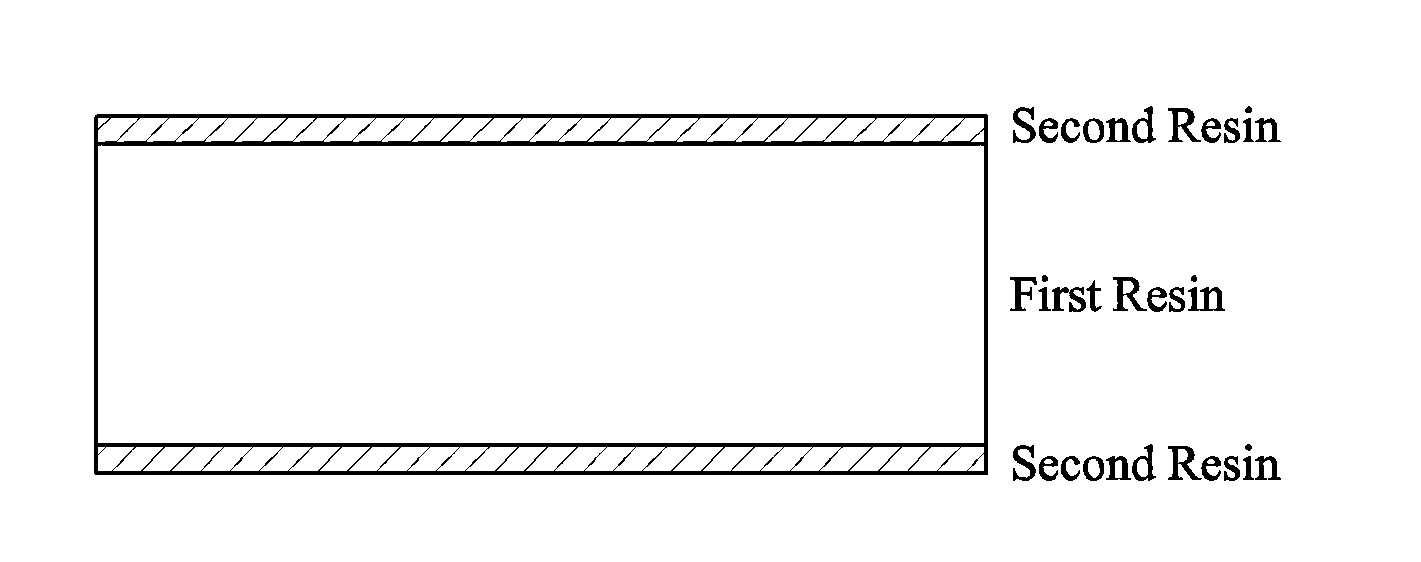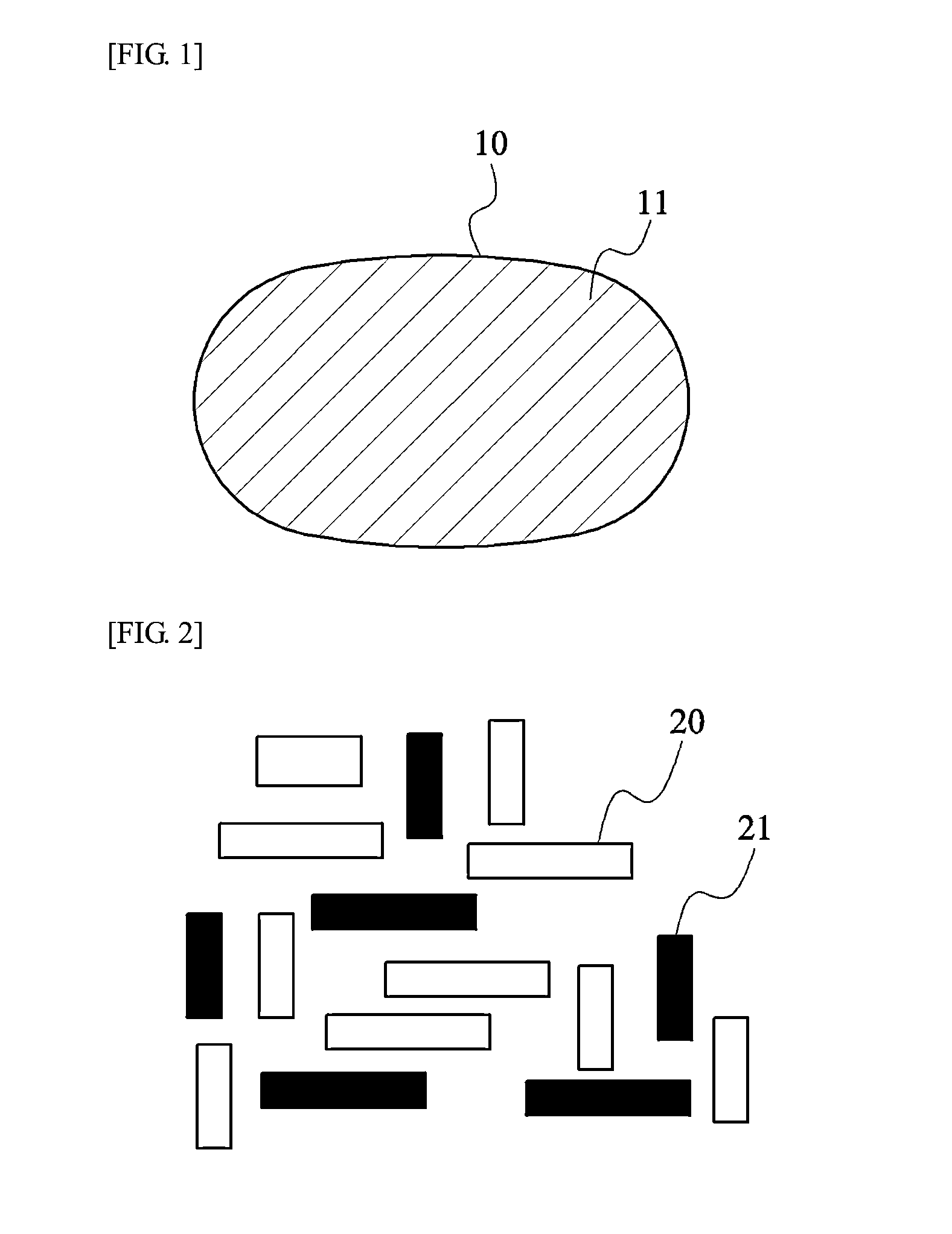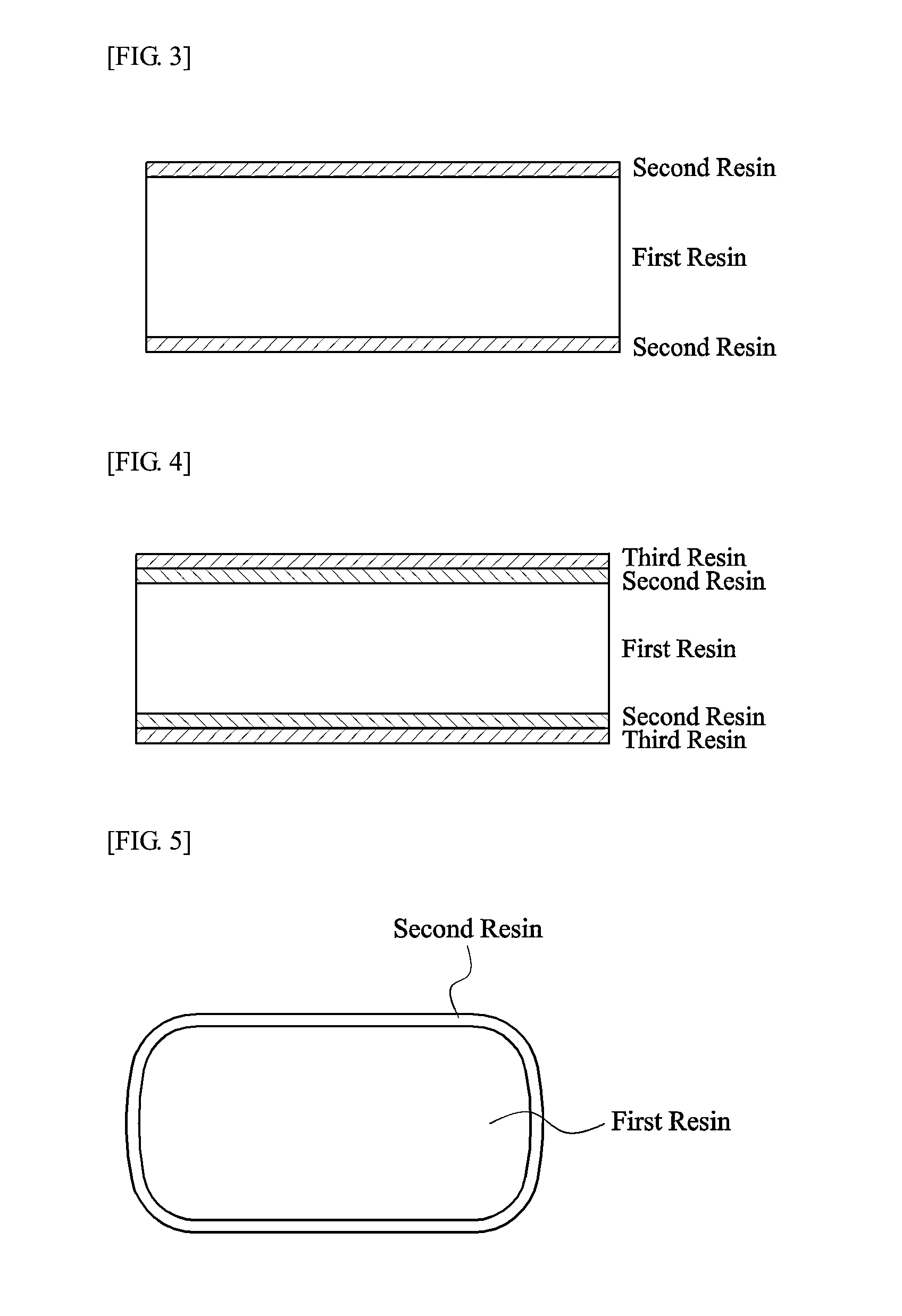Resin blend
a technology of resin and blend, applied in the field of resin blend, can solve the problems of plastic resin general decomposition, easy to break, and decrease in weather resistance and strength, so as to improve mechanical and surface characteristics of resin articles, reduce manufacturing time and/or manufacturing cost, and improve productivity
- Summary
- Abstract
- Description
- Claims
- Application Information
AI Technical Summary
Benefits of technology
Problems solved by technology
Method used
Image
Examples
example 1
[0091](1) Preparation of First Resin and Second Resin
[0092]As a first resin, a first resin-1 (a thermoplastic resin composed of 60 wt % methyl methacrylate, 7 wt % acrylonitrile, 10 wt % butadiene and 23 wt % styrene) was used. As a second resin, a second resin-1 was prepared as following: 1500 g of distilled water and 4 g of 2% polyvinylalcohol aqueous solution as a dispersing agent were put into a 3-liter reactor and dissolved. Subsequently, 560 g of methyl methacrylate, 240 g of glycidyl methacrylate, 2.4 g of n-dodecyl mercaptan as a chain transfer agent and 2.4 g of azobisisobutyronitrile as an initiator were further added thereto, and mixed while stirring at 400 rpm. The mixture was polymerized by 3-hour reaction at 60° C., and cooled to 30° C., thereby obtaining a bead-type second resin-1. Afterward, the second resin-1 was washed three times with distilled water, dehydrated and dried in an oven.
[0093]As the results of measurement of the physical properties of the first resin-...
example 2
[0096](1) Preparation of First Resin and Second Resin
[0097]As a first resin, the first resin-1 of Example 1 was used. As a second resin, a second resin-2 was prepared as following: 1500 g of distilled water and 4 g of 2% polyvinylalcohol aqueous solution as a dispersing agent were put into a 3-liter reactor and dissolved. Subsequently, 760 g of methyl methacrylate, 40 g of perfluorohexylethyl methacrylate, 2.4 g of n-dodecyl mercaptan as a chain transfer agent and 2.4 g of azobisisobutyronitrile as an initiator were further added thereto, and mixed while stirring at 400 rpm. The mixture was polymerized by 3-hour reaction at 60° C., and cooled to 30° C., thereby obtaining a bead-type second resin-2. Afterward, the second resin-2 was washed three times with distilled water, dehydrated and dried in an oven.
[0098]As a first resin, the first resin-1 of Example 1 was used. As a second resin, a second resin-2 was prepared as following: 1500 g of distilled water and 4 g of 2% polyvinylalcoh...
example 3
[0102](1) Preparation of First Resin and Second Resin
[0103]As a first resin, the first resin-1 of Example 1 was used. As a second resin, a second resin-3 was prepared by the same method as described in Example 1, except that 560 g of methyl methacrylate, 240 g of tertiary butyl methacrylate, 2.4 g of n-dodecyl mercaptan as a chain transfer agent and 3.2 g of azobisisobutyronitrile as an initiator were put into the reactor.
[0104]As the results of measurement of the physical properties of the first resin-1 and the second resin-3, it was shown that a difference in surface energy was 1.1 mN / m, a difference in melt viscosity was 360 pa*s, a difference in solubility parameter was 0.7 (J / cm3)1 / 2, a weight average molecular weight of the second resin obtained by GPC was 80K, and a molecular weight distribution (PDI) of the second resin was 1.9.
[0105](2) Preparation of Resin Blend and Resin Article Using the Same
[0106]A sample 3 having a thickness of 3200 μm was prepared by the same method a...
PUM
| Property | Measurement | Unit |
|---|---|---|
| molecular weight distribution | aaaaa | aaaaa |
| temperature | aaaaa | aaaaa |
| surface energy | aaaaa | aaaaa |
Abstract
Description
Claims
Application Information
 Login to View More
Login to View More - R&D
- Intellectual Property
- Life Sciences
- Materials
- Tech Scout
- Unparalleled Data Quality
- Higher Quality Content
- 60% Fewer Hallucinations
Browse by: Latest US Patents, China's latest patents, Technical Efficacy Thesaurus, Application Domain, Technology Topic, Popular Technical Reports.
© 2025 PatSnap. All rights reserved.Legal|Privacy policy|Modern Slavery Act Transparency Statement|Sitemap|About US| Contact US: help@patsnap.com



